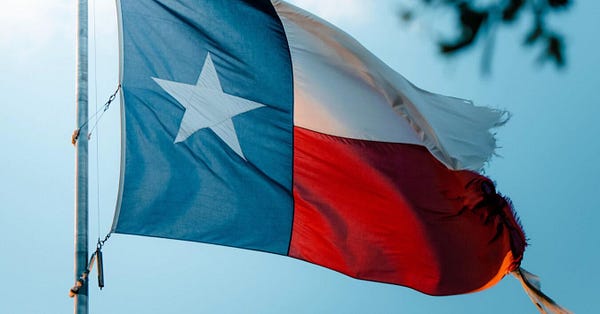10. Coronabus or Bust? The Price of Shutdowns & Keynesianism
Business shutdowns by governments are costly, so how should we proceed?
Hello Friend!
I hope you had a blessed Christmas. My family did as we celebrated Jesus’ birth and his eventual death on the cross for our sins. That salvation came at a great cost, yet another example of how nothing is free. We’re now relaxing after a great day playing outside with our boys and hanging out with friends. Those moments are priceless.
What’s not priceless is the latest $908 billion COVID aid bill along with the omnibus that’s combined to be over $2 trillion and appropriately called the “coronabus” given how much pork is in this package. I’ve been calling it “CARES 3.0” because there was the original bill and another bill that added funding to the programs created in the original bill, so this is really the third bill that’s funding many of the same things.
And that’s part of the problem, as it comes with a huge cost and President Trump is correct to hint at vetoing it. However, the President’s reasoning seems to be to increase the amount in checks to individuals from $600 to $2,000, which would push incomes well above where they were before the pandemic and provide income to many individuals who weren’t influenced much if at all from the shutdown. This is likely the case for you and me, as we are able to work from home or have savings to live on for a while to deal with this situation. I get the point of advocating for more in a check to individuals as it appeals to struggling Americans and balances some of the atrocities in this monstrosity of a bill, but that doesn’t make it good policy.
This notes the importance of work flexibility along with saving for a rainy day but also notes the huge cost to those who aren’t in this boat. Unfortunately, too many have and will continue to fall through the cracks of our economic lifeline that should ultimately be improved by moving toward more capitalism and away from socialism. While civil society should be first to help those in need, governments will play a role though hopefully a more limited one as it assists those who can’t be helped otherwise (last resort). This would help improve our bloated, ineffective safety net system that often just expands bureaucracy and helps too many of those the programs were not intended.
Here are some of the details of CARES 3.0 in this thread:



Here’s my key takeaway as I wish there was a better path for too many struggling Americans.
CARES 3.0 could do more harm to our opportunities to thrive, regain the freedom to earn, and harm ours, our kids’, and our grandkids’ futures as it expands government dependency, increases the federal debt, and slows economic growth without addressing the underlying causes of the situation. This is from the redistribution of private sector resources today and thereafter to others through government bureaucracies and flawed programs instead of more in our pockets. Why not give nothing a chance…which really means stop hampering growth through poor policies. This doesn’t mean there shouldn’t be any government action, but it does mean that any action should be limited in nature to best assist those actually in need.


I have more to say about the coronabus and other issues related to the need to VETO the CARES 3.0 bill as long as it does a lot of the current nonsense below. I don’t see that changing, and actually getting worse with the checks increasing from $600 to $2,000 per adult. Instead, it would be better for Congress to rework this aid bill, put pressure on politicians to safely reopen society, and provide resources in a targeted, timely, and temporary way to give us the best opportunities to thrive.
OPEN TEXAS AND AMERICA
Summary:
As of December 25, there are 10 Trauma Service Areas (TSA) on the Governor’s list for elevated restrictions that includes 45% of Texans. The 7-day moving average of new COVID-19 cases looks to have plateaued and are 20% above their summer highs while fatalities are 40% below then.
Available hospital capacity statewide remains near the average of 22% since June 2020.
Austin area has the second-lowest rate of COVID-19 hospitalizations as a share of total hospital capacity or staffed inpatient beds while keeping a relatively normal rate of available beds of 20% since June.
Overview of COVID-19 in Texas
The 7-day average of new confirmed cases in Texas looks to have plateaued since Dec. 7 at about 12K on Dec. 25, with the highest so far being 19,185 on Dec. 23—likely from more people being tested before Christmas. The 7-day average of new fatalities in Texas on Dec. 12 (latest data available) was at about 160—possibly peaking recently though more recorded death certificates will be reported.
Cases remain well above the highs over the summer (12K v 10K) while fatalities remain well below their highs then (250 vs. 160), meaning the case-fatality rate has so far remained substantially lower now than it was during the highs over the summer—possibly from improvements in therapeutics, younger and healthier population infected, and better utilization of hospital resources.
There remains a relatively high rate of available beds as a share of staffed inpatient beds across most of the state’s TSAs with every TSA having at least 11% available—20% available statewide. Testing remains on average around 100K per day and the positivity rate remains elevated (15% for new molecular tests and 10% for new antigen tests) but well below the high rates during the summer (25% for new molecular tests and 20% for new antigen tests) though with substantially fewer tests (about 40K during July).
While debatable, improvements could be from Governor Abbott’s more targeted, timely, and temporary policy approach of examining hospitalizations per TSA and sending resources where needed most.
Texas Governor Abbott Metric Overview:
Per GA’s metric of COVID-19 hospitalizations as a share of total hospital capacity for seven consecutive days, TSAs below 15% can have most businesses expand to 75% capacity, keep state mask mandate, and bars (and others) open to 50% capacity with the approval of the county’s judge.
10 of 22 TSAs are reported on the list of further restrictions: TSA A (Amarillo), TSA B (Lubbock), TSA D (Abilene), TSA E (Dallas/Ft. Worth), TSA H (Lufkin), I (El Paso), M (Waco), R (Galveston), and TSA T (Laredo).
45% of Texans are at 50% capacity + other restrictions while 55% of Texans are at 75% capacity + other restrictions.
This CV19-to-capacity metric has been rising recently statewide since mid-Oct. to 15.7%, but remains well below July’s 17.0% average.
Hospital Overview Statewide:
COVID-19 hospitalizations up 11.9% (to 10,868 hospitalizations) from 7 days ago and up 19.3% from 14 days ago, the level is above July’s 9,713 average
Available beds as a share of staffed inpatient beds up to 20.0%, near the averages of 21.7% in July and of 22% since June
Available beds up 12.1% (to 12,680 beds) from 7 days ago and up 15.1% from 14 days ago, the level is well above July’s 11,926 average
Occupied beds down 1.4% (to 50,796 beds) from 7 days ago and up 1.5% from 14 days ago, the level is well above July’s 43,397 average
Staffed inpatient beds up 1.0% (to 63,476 beds) from 7 days ago and up 4.0% from 14 days ago, the level is well above July’s 55,323 average
Hospital capacity up 0.9% (to 69,254 beds) from 7 days ago and up 3.6% from 14 days ago, the level is well above July’s 56,871 average





TEXAS ECONOMIC AND FISCAL SITUATION
State-level GSP report: Recently, the U.S. Bureau of Economic Analysis reported state-level gross state product for the third quarter of 2020. As expected given the strong rebound in the U.S. GDP report in Q3, there were strong rebounds in every state. Some rebounded faster than others with most of the states that reduced their restrictions bouncing back faster than those that didn’t. Texas should learn from this as well as the state’s economic activity picked up but at a slower rate than the vast majority of states and remains well below its level in Q4:2020 due primarily to increased COVID-related restrictions during Q3.



Texas Jobs Report: While the economy picked up in Q3 over Q4, some of that steam has slowed in Q4 from increased restrictions based on the Governor’s metric using hospitalizations. And those hospitalization rates increased above the chosen threshold to force more restricted capacity by businesses. Less economic activity was in the U.S. Bureau of Labor Statistics’ latest state-level jobs report with essentially every state having slower job creation, which coincides with the U.S. figures being less than expected earlier this month.




How to Return to Prosperity? Here’s a link to my previous newsletter that outlined the path forward from a fiscal perspective, as the first thing to do is to safely reopen states, in terms of TPPF’s Responsible Recovery Agenda for the Texas Legislature to consider in the session that starts on Jan. 12, 2021. You can find out this information at the following Twitter thread as well, which includes several other legislative priorities than just those in the Recovery Agenda to help provide a more inclusive institutional framework in the Lone Star state to let people prosper.


What Are Other States Doing to Support Prosperity? Here is a nice thread with what other states are doing to provide a path to remove the barriers of government that hinder opportunities for us to thrive.


U.S. ECONOMIC AND FISCAL SITUATION
I discussed my key points about the U.S. economic and fiscal situation above, but let me share my take on talks about “stimulus” and how “deficits don’t matter” in the following Twitter thread (click on it in this newsletter to see the entire thread). In summary, governments can’t freely stimulate anything and excess spending matters, which is why having the freedom to earn and targeting resources to those in need is critical. Here a several of the key tweets in that thread:










TCJA Turns 3:





Schooling Choices are Essential, Especially During COVID:


Thanks again for reading! I’m truly grateful for you continuing to read this newsletter. As 2020 comes to a close, we have much to accomplish to find opportunities to let people prosper.
If you haven’t signed up for my newsletter yet, please register here at no charge. And follow me on Twitter: @vanceginn.
Have a Happy New Year if I don’t write another newsletter before then, which I may given how things go in D.C. Until then, many blessings to you and yours.
Vance Ginn, Ph.D. | www.vanceginn.com | #LetPeopleProsper





